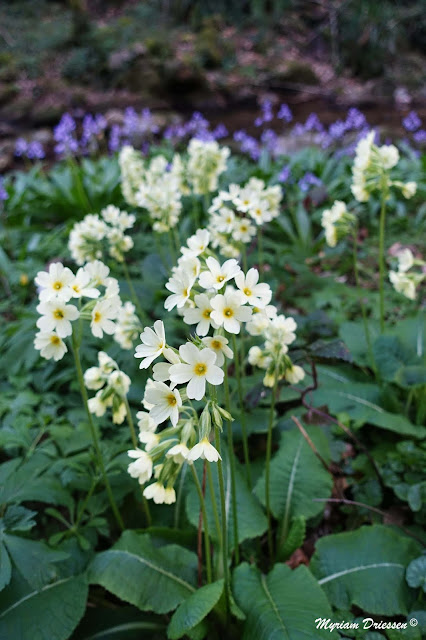
L'Euphorbe des
bois (Euphorbia amygdaloides) est une
plante vivace commune des sous-bois ombragés européens.
Les
fleurs, présentes de mars à juillet, sont de couleur jaune et monoïques, c’est-à-dire
portant les deux sexes mais séparés. Les fleurs mâles sont réduites aux
étamines et la fleur femelle au pistil.
Les
feuilles sont obovales, entières, contrairement à celle de l’euphorbe reveil-
matin (E. helioscopia) qui sont dentées. Les bractées florales sont soudées deux
à deux.
Les
quatre glandes nectarifères sont jaunes, en croissant à cornes convergentes. Elles
attirent les abeilles qui en assurent la pollinisation et les fourmis qui
assurent la dissémination des graines (myrmécochorie) comme nous l’avions
rencontré notamment chez l’Hellebore.
L'Euphorbe se développe aussi par voie végétative depuis son rhyzome.
C'est
une plante vénéneuse, notamment son latex urtiquant et ses graines qui
sont violemment vomitives et donc dangereux pour l'homme et le bétail.
Euphorbia
amygdaloides, the wood
spurge, is a species of flowering
plant, bushy evergreen perennial and native to European woodland
locations.
It has dark
green slightly hairy leaves and a complex green-yellow inflorescence, typical
of Euphorbia, appears in spring and early summer. It is monoecious
(bearing male and female flowers on the same plant) with the male flowers reduced to only the stamen and the females to the pistil.
Spurges possess
a highly specialized inflorescence (bloom), called the cyathium.
This cyathium is a cup-like cluster or whorl of bracts that encloses a group of
structures including a single female (pistillate) flower, ringed by several
male (staminate) flowers. Both are enclosed within a ring formed by four
horseshoe shaped glands (involucral glands). These glands secrete a
shallow layer of nectar which is attractive to flies, bees, and other insects
like ants.
Its seeds are
dispersed by ants (the so-called myrmecochory we already found in Helleborus
foetidus).
The plant can spread rapidly by underground root too.
It is
toxic for men and cattle. Its milky latex can cause irritation on contact with
the skin.









